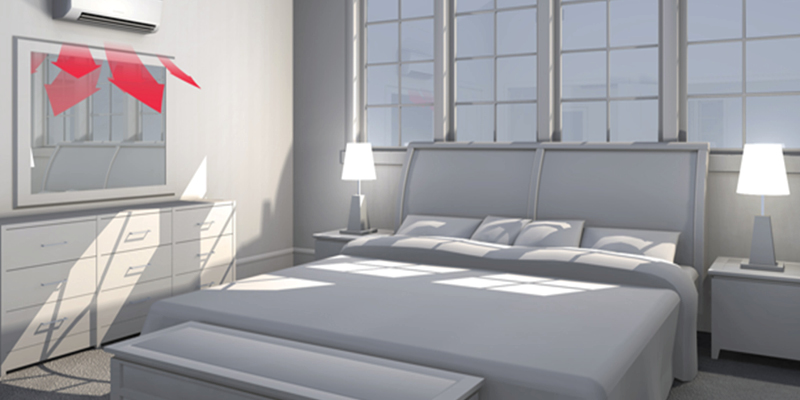How Does a Ductless Heat Pump Work?

Whether you need to improve comfort in one room or your entire home, consider that a ductless heat pump could be the solution you’re looking for. But just how does a ductless heat pump work, and what makes it one of the most efficient options for heating and air conditioning? Let’s find out.
How Mini Splits Work
Also called wall-mounted units or ductless mini splits, ductless heat pumps consist of two units: an indoor evaporator coil and an outdoor condenser. If you understand how heat pumps work, this probably sounds familiar.
You might also know that heat pumps – traditional and ductless alike – are capable of providing heat in the winter and air conditioning in the summer. They are built similarly to air conditioners, but they feature a reversing valve, which enables them to operate backward by pulling heat from outdoor air and depositing it into your home during cold months.
The major difference between regular heat pumps and ductless systems is that air is introduced to the interior via a built-in air handler, eliminating the need for ductwork. A small opening in the wall allows pipes and wires to pass between the indoor and outdoor units, and multiple indoor air handlers can connect to a single outdoor condenser, allowing for whole-house heating and cooling with no ducts required!
Benefits of Ductless Heat Pumps
If a ductless HVAC system sounds good to you, consider the many benefits that await.
Energy Efficiency
The average ducted system causes up to a 40 percent drop in efficiency due to air leaks and poor insulation. In contrast, the energy losses associated with ductless heating and cooling is around 1 to 5 percent.
Ductless systems also tend to be better at heating your home when the temperature drops outside compared to traditional heat pumps. Expect consistent indoor comfort, even if it gets down to 14 degrees F or lower.
More Capabilities with Less Intrusion Than Window Units
Bulky window air conditioners commandeer the window they’re installed in, blocking the view and preventing you from opening the window when the weather is nice. In contrast, ductless systems are compact and stylish, with an inconspicuous location high on the wall.
Wall-mounted units are also much quieter compared to window-mounted air conditioners. After all, the noisiest component, the compressor, is located outside and can be positioned up to 100 feet away from the indoor unit.
To top it all off, ductless heat pumps provide air conditioning and heating, making them twice as useful as window ACs. This is especially true if you live in an older home without ductwork, and you don’t want to put up with the expense and hassle of having ducts installed.
Cleaner Indoor Air
Ductwork is a significant source of indoor air pollution in homes with standard forced-air HVAC systems. Dust, mould spores, insulation particles, and more make their way into the ductwork and then circulate from room to room. On the other hand, ductless heat pumps provide advanced filtration to purify the air before distributing it into the living space, removing up to 99.9 percent of airborne contaminants for cleaner indoor air.
Built-in Zoning
Separating your home into different zones allows you to control sections individually for improved comfort and energy savings. With a ductless heat pump, zoning is built right in. You just need a single outdoor condenser connected to multiple indoor air handlers. Then, handheld controls let you change temperature and airflow settings for individual units throughout your home.
If you want comfortable, affordable, whole-house heating and cooling without ductwork, contact Aire Serv® to learn more about ductless heat pumps!
 Click to call
Click to call


